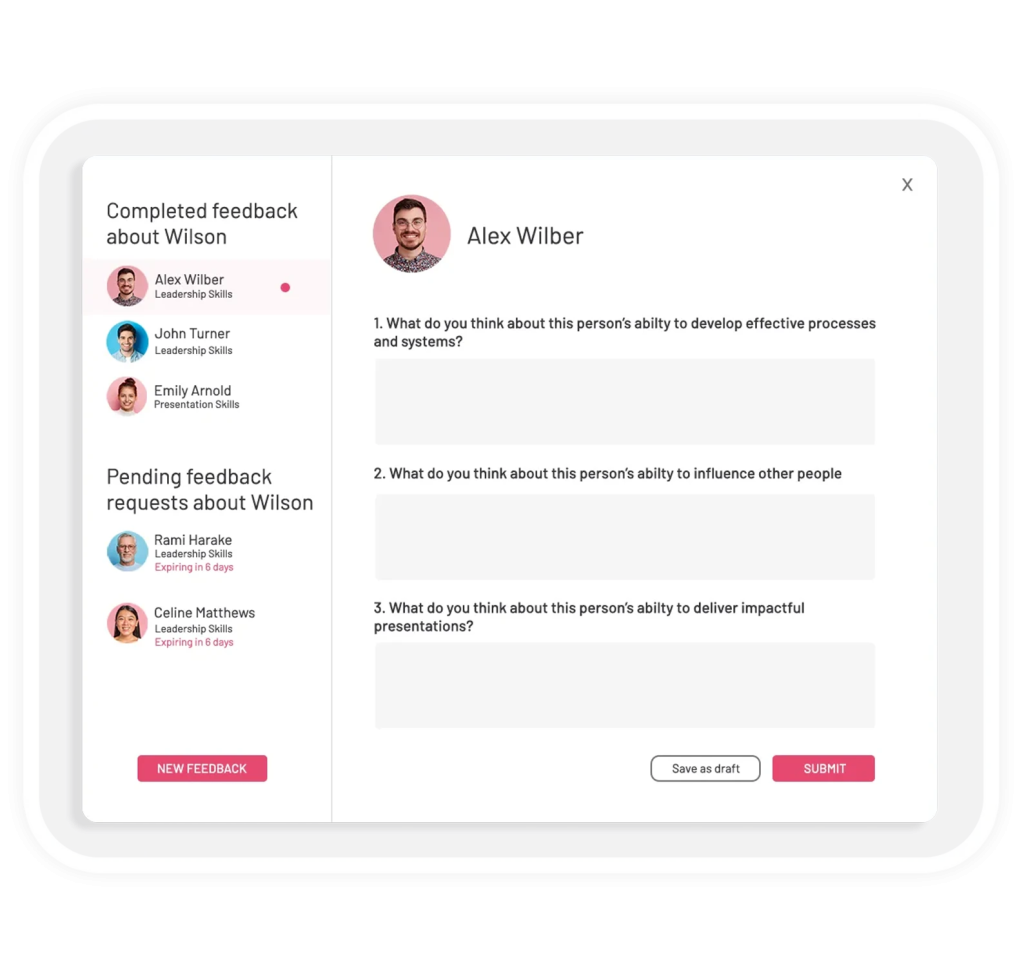If you’re a manager, team leader, or just interested in learning more about how feedback can improve your team’s performance, then you’re in the right place.
We all know that feedback is important, but it can be tricky to navigate. That’s why we’ve put together this post to break down the different types of feedback models and give you some practical tips on how to implement them in your organization.
We’ll start by defining what we mean by feedback models and why they’re so important in management.
Then, we’ll dive into the different types of feedback models, including 360-degree feedback, upward feedback, downward feedback, and peer feedback. We’ll look at the pros and cons of each model so you can decide which one might be the best fit for your team.
But it’s not just about knowing the different types of feedback models – it’s also important to know how to implement them effectively.
That’s why we’ll also cover some best practices for rolling out the best feedback models and how to overcome common challenges that come up.
So, whether you’re looking to improve communication and collaboration within your team, or you’re simply curious about how feedback can boost your team’s performance, this post has got you covered. Let’s dive in!
Table of Contents
Types of Feedback Models
360-Degree Feedback Model
360-Degree Feedback is a type of feedback model that involves collecting feedback from multiple sources, including the employee’s supervisor, peers, subordinates, and even customers.
This type of feedback model provides a comprehensive view of the employee’s performance and can be used to identify areas for improvement.
One of the biggest advantages of 360-Degree Feedback is that it provides a well-rounded view of an employee’s performance, by getting feedback from multiple sources.
It also allows for self-reflection and personal development, since employees get to see how others perceive them.
However, it also has its drawbacks, like the process can be time-consuming and it requires a certain level of trust and confidentiality to be effective.
But overall, 360-Degree Feedback can be a powerful tool for identifying areas of improvement and promoting personal development when used correctly.
If you want to increase the effectiveness of your 360-degree feedback process, implementing an easy-to-use 360-degree feedback software can be a great choice.

Teamflect, as one of them, includes features such as customizable feedback templates, which can be used to create consistent and standardized feedback forms for different positions within the organization.
This helps ensure that the feedback collected is relevant and useful for the employee’s development.
Teamflect also offers a user-friendly interface that allows for easy navigation and data analysis, making it easy for managers and HR professionals to understand the feedback and take action accordingly.



